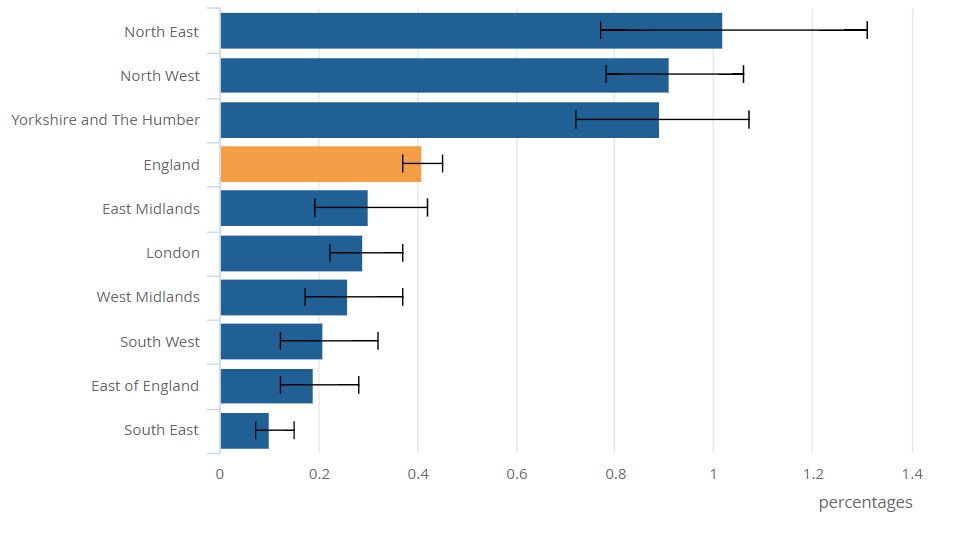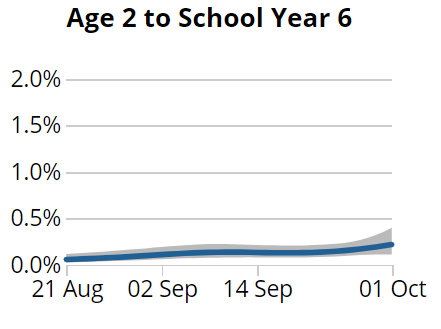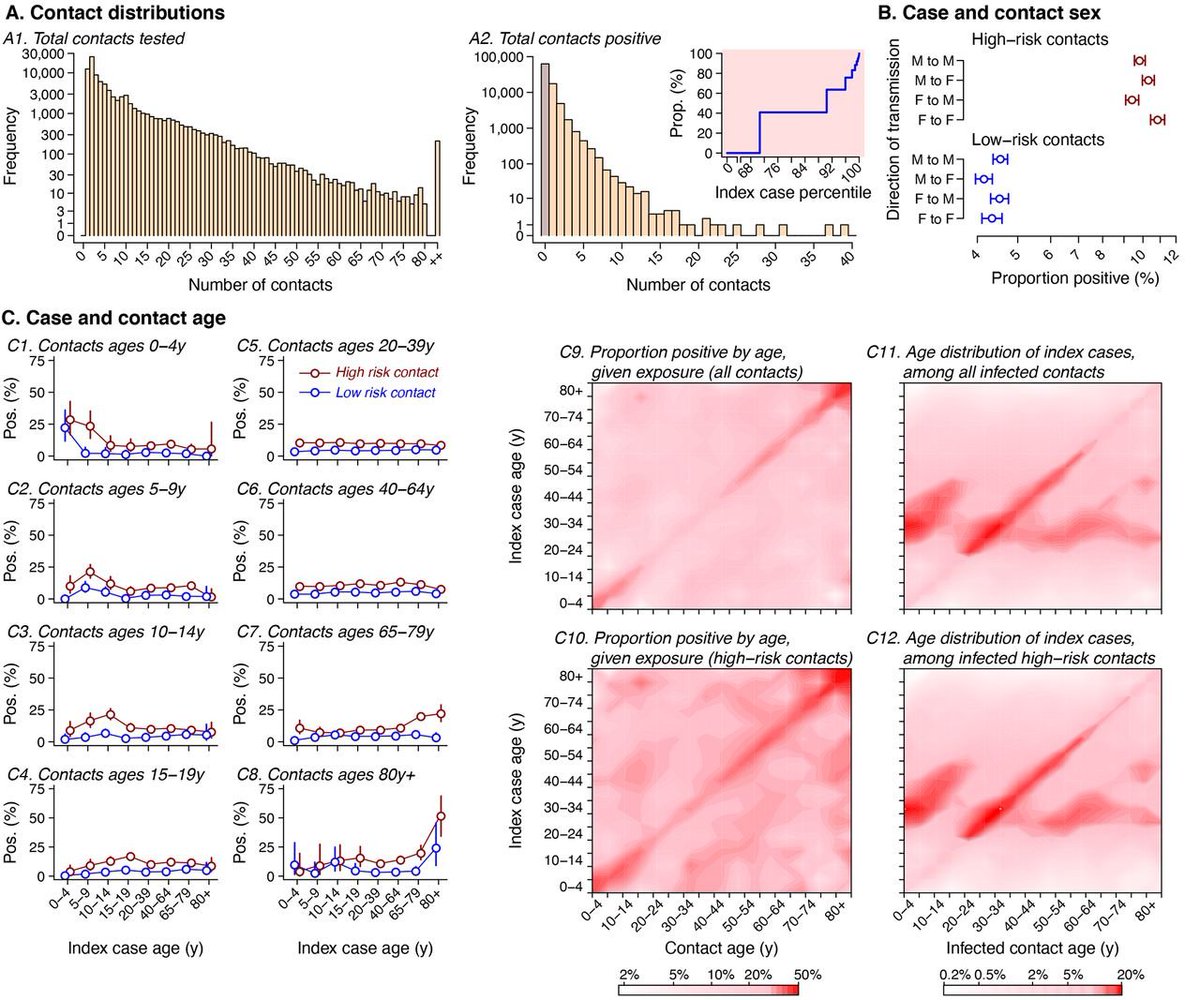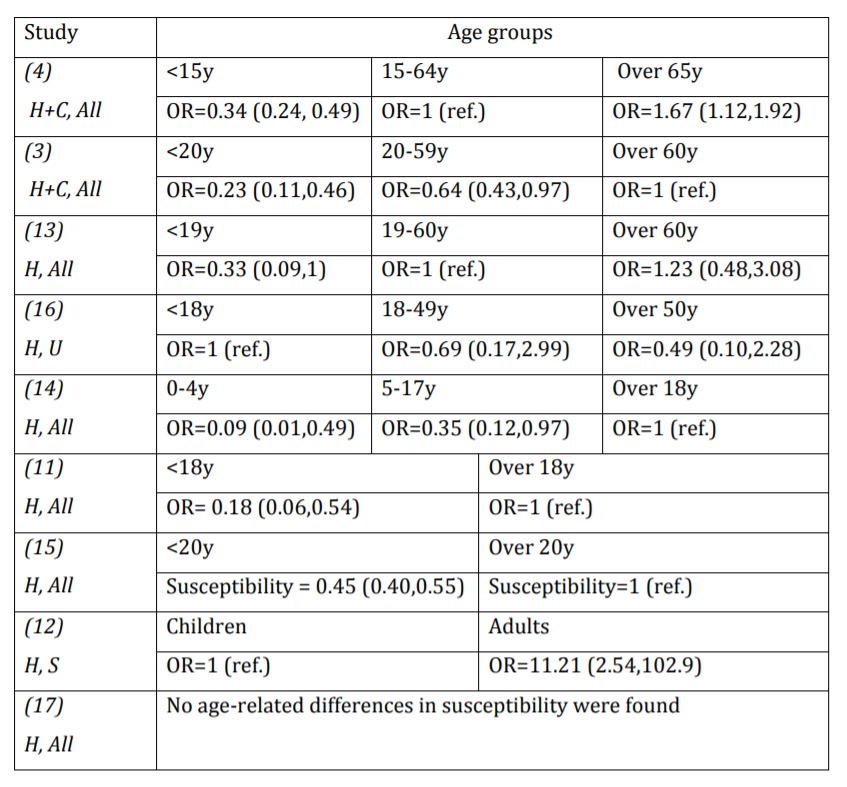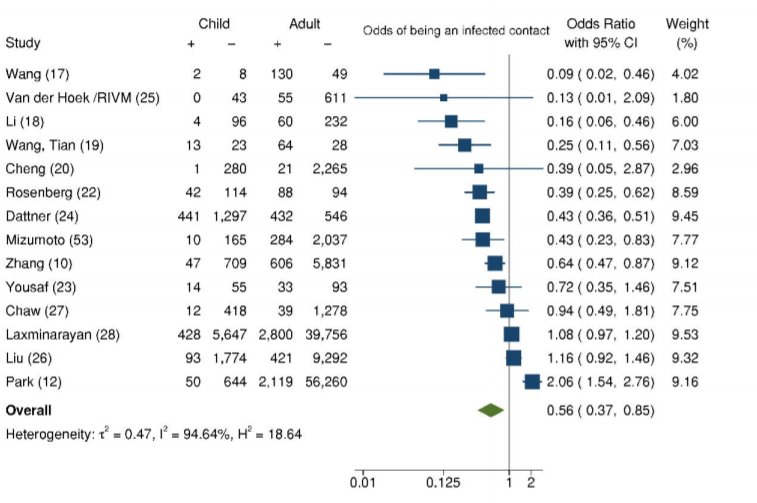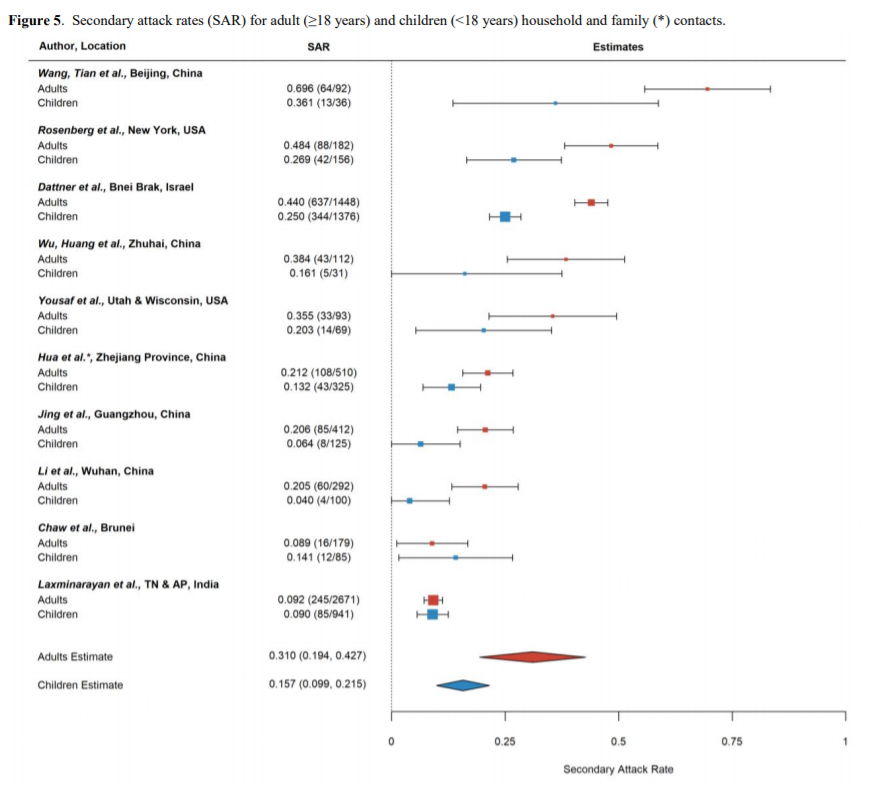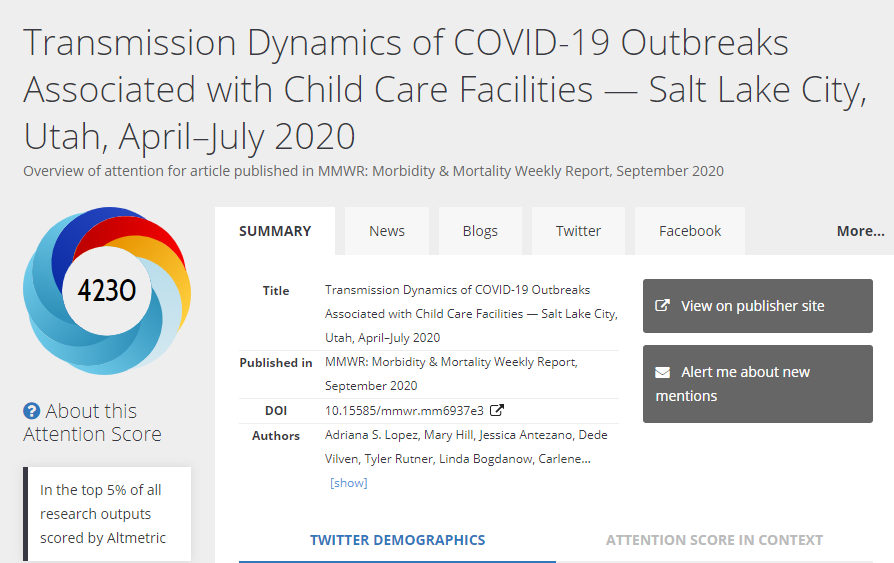
A criticism of the data regarding children and #COVID19 from the first surge is that it was acquired with schools closed
Its now surge 2 and they're open
Let's look at the up to date info from @PHE_uk and @ONS infection survey and see what is going on
#schoolsreopening
1/10
Its now surge 2 and they're open
Let's look at the up to date info from @PHE_uk and @ONS infection survey and see what is going on
#schoolsreopening
1/10
After an initial surge, in the recent weeks of @PHE_uk data we have seen a decline in cases in the 10 - 19y age group
Otherwise lowest cases remain in the 0 - 10y ages, although still trending up
assets.publishing.service.gov.uk/government/upl…
2/10
Otherwise lowest cases remain in the 0 - 10y ages, although still trending up
assets.publishing.service.gov.uk/government/upl…
2/10
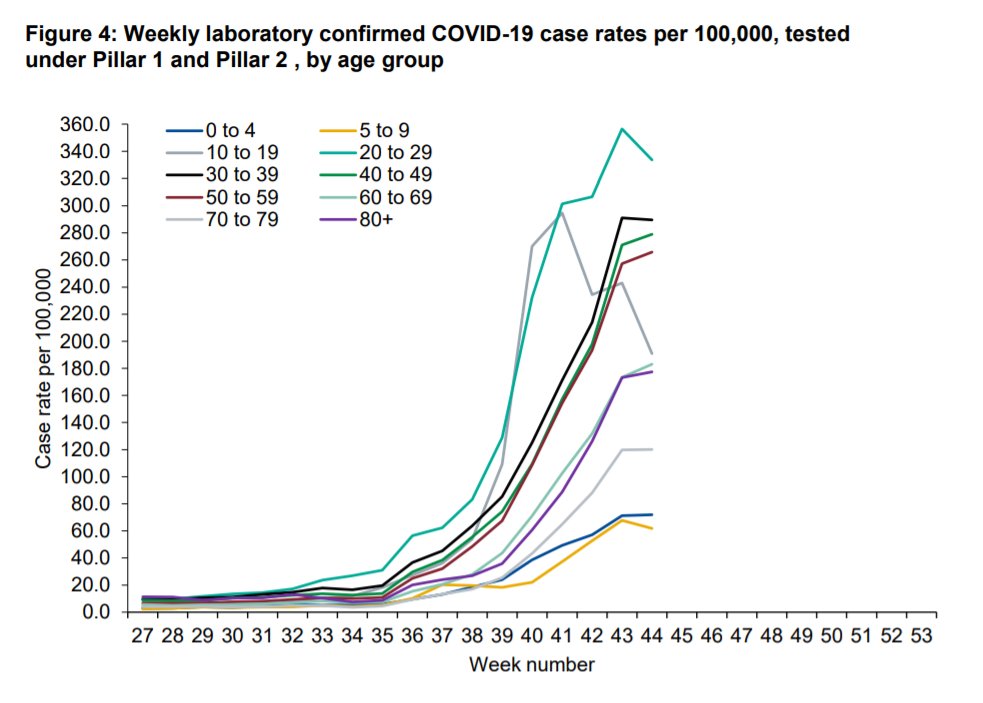
What about school outbreaks?
They've been flat for the past several weeks despite rising prevalence in the community
Unfortunately doesn't tell us about how many cases involved or whether it's children or staff/teachers
assets.publishing.service.gov.uk/government/upl…
3/10
They've been flat for the past several weeks despite rising prevalence in the community
Unfortunately doesn't tell us about how many cases involved or whether it's children or staff/teachers
assets.publishing.service.gov.uk/government/upl…
3/10
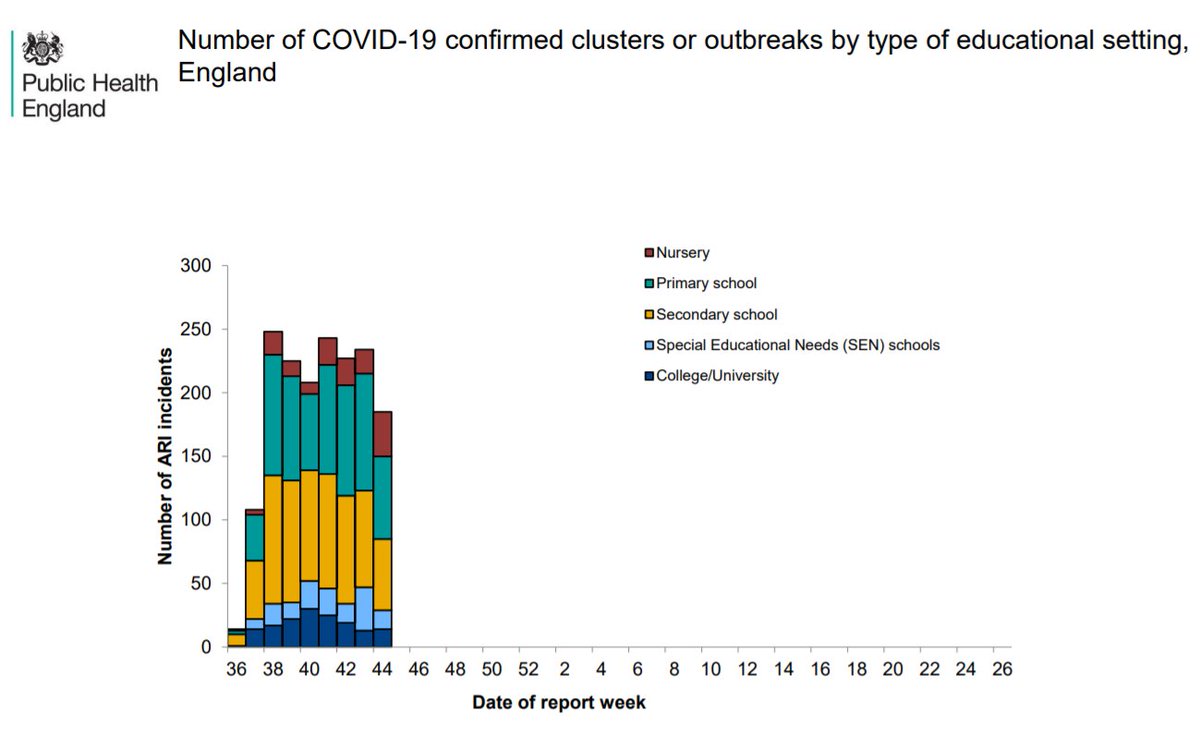
People will rightly point out that these probably underestimate the case numbers, due to less symptoms or asymptomatic infections in children
The @ONS infection survey overcomes this by testing *randomly* at large scale
Let's see what's going on there...
4/10
The @ONS infection survey overcomes this by testing *randomly* at large scale
Let's see what's going on there...
4/10
Primary school age children among the lowest prevalence despite full time in person schooling
Secondary age however has high prevalence, although also showing signs of flattening/decline; either following trend in young adults, or half term related
ons.gov.uk/peoplepopulati…
5/10
Secondary age however has high prevalence, although also showing signs of flattening/decline; either following trend in young adults, or half term related
ons.gov.uk/peoplepopulati…
5/10
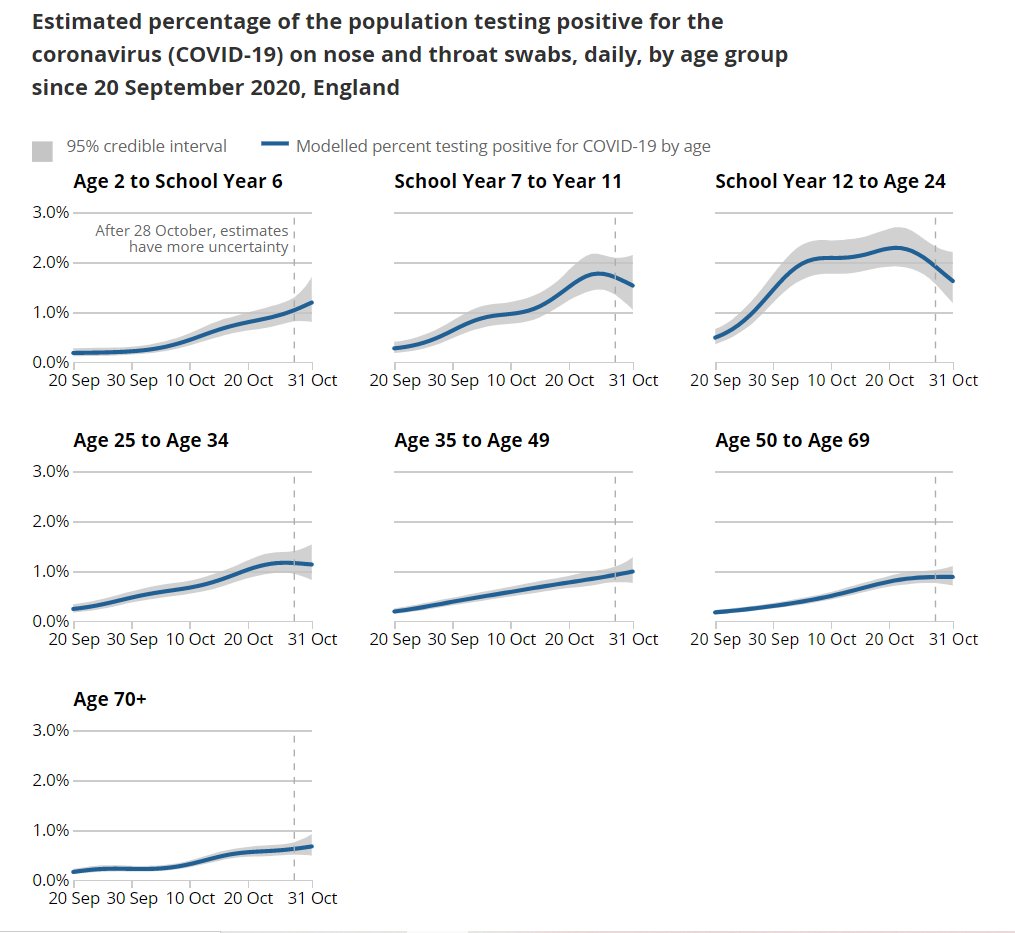
This more or less mirrors what we expect from existing data
Primary school age much lower risk, teenagers higher risk
How much secondary transmission is *in schools* as opposed to from the community is unclear, but hopefully we will have more data soon
6/10
Primary school age much lower risk, teenagers higher risk
How much secondary transmission is *in schools* as opposed to from the community is unclear, but hopefully we will have more data soon
6/10
But were initial increases in cases due to schools reopening?
No
We'd expect a 2 -3 week lag if they were due to schools (red arrow)
Cases were already increasing by week 36 *before* schools opened
Schools will have added to an existing increase, but did not cause it
7/10
No
We'd expect a 2 -3 week lag if they were due to schools (red arrow)
Cases were already increasing by week 36 *before* schools opened
Schools will have added to an existing increase, but did not cause it
7/10
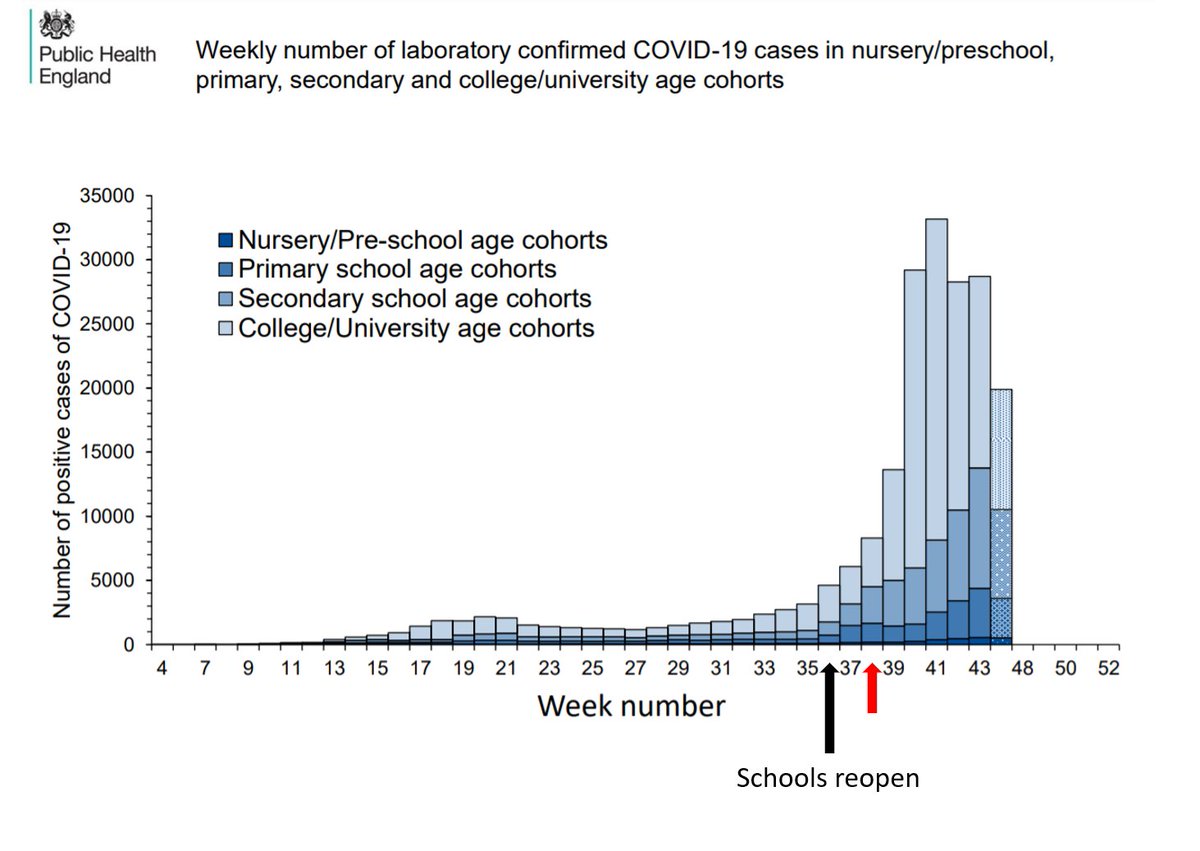
The trend has been:
Rapid increase in young adults/older teens - they are to COVID-19 what kiddies are to flu
This leaks into secondary age children and adults
Primary age children get dragged up behind along with older adults
8/10
Rapid increase in young adults/older teens - they are to COVID-19 what kiddies are to flu
This leaks into secondary age children and adults
Primary age children get dragged up behind along with older adults
8/10
What about teachers?
It is vital we ensure our key workers are kept safe whilst providing essential services
No sign of any increased risk for teachers compared to other key workers so far - good news
ons.gov.uk/peoplepopulati…
9/10
It is vital we ensure our key workers are kept safe whilst providing essential services
No sign of any increased risk for teachers compared to other key workers so far - good news
ons.gov.uk/peoplepopulati…
9/10
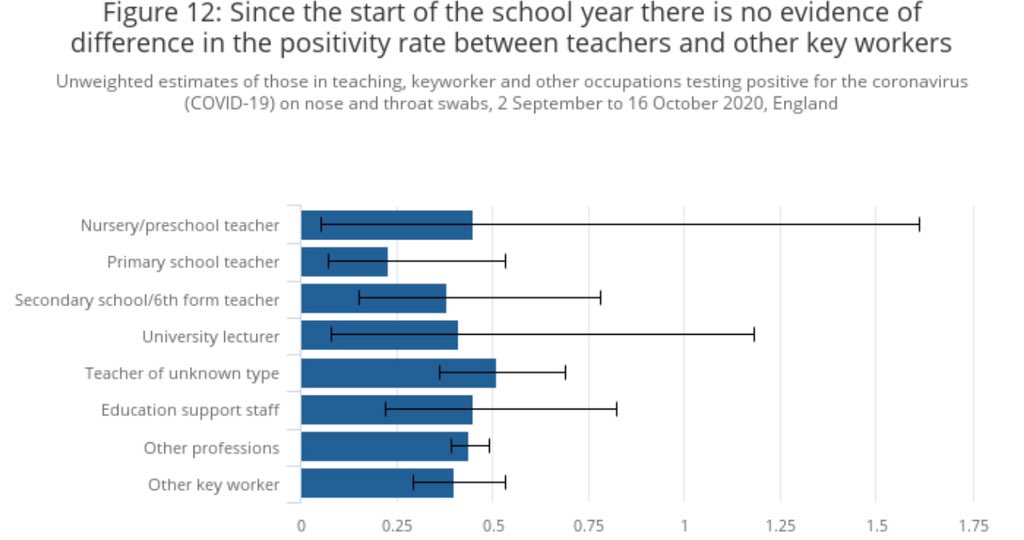
Summary
In periods of high prevalence:
-primary schools still low risk
-secondary age children higher risk
-whether cases are transmitted in school or elsewhere is unclear
-community infection rates drive school infections
Keep community rates low to prevent outbreaks
10/10
In periods of high prevalence:
-primary schools still low risk
-secondary age children higher risk
-whether cases are transmitted in school or elsewhere is unclear
-community infection rates drive school infections
Keep community rates low to prevent outbreaks
10/10
• • •
Missing some Tweet in this thread? You can try to
force a refresh

